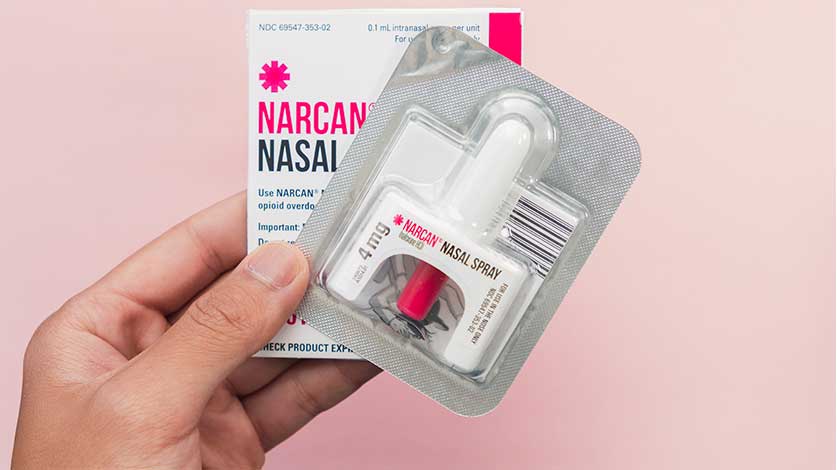Harm Reduction Ohio: Programs & Strategies To Reduce Overdose

Medically Reviewed By: Kimberly Langdon, M.D.
Harm reduction refers to strategies that aim to decrease the dangers associated with substance use, including overdose, infectious diseases, and addiction. Ohio has a variety of harm reduction initiatives.

In 2021, the Ohio overdose death rate reached 5,083, the highest number ever recorded in the state. To reduce this rate and other drug-related dangers, Ohio has introduced various harm reduction strategies.
Harm reduction refers to strategies that aim to decrease the dangers associated with substance use, including overdose, infectious diseases, and addiction. Like other states, Ohio has a variety of harm reduction initiatives. The most popular examples include:
Harm Reduction Ohio
Harm Reduction Ohio is a non-profit organization that serves as the state’s largest naloxone distributor. Naloxone (brand name Narcan) is an opioid overdose reversal drug.
As an opioid antagonist, it can rapidly reverse the life-threatening effects of an opioid overdose, including slowed breathing and heart rate. It’s available as a nasal spray or injectable liquid.
You should carry naloxone if you or someone you love abuses drugs of any kind, not just opioids. That’s because many street drugs are laced with the synthetic (human-made) opioid fentanyl.
According to the Centers for Disease Control and Prevention (CDC), fentanyl is up to 100 times more powerful than morphine and responsible for numerous drug overdose deaths.
By distributing free naloxone to anyone who wants it, Harm Reduction Ohio helps fight the opioid overdose epidemic. The organization receives naloxone from the Ohio Department of Health and then mails it to people who complete free, online training on how to administer the drug.
Along with distributing naloxone, Harm Reduction Ohio also connects Ohioans with comprehensive harm reduction programs in their areas. These programs offer products and services such as:
Fentanyl Test Strips
Most people can’t tell when a drug has been laced with fentanyl. The only way to completely avoid a fentanyl-related overdose is to never use street drugs.
However, people who struggle with substance abuse and addiction can reduce their risk of overdose by testing their drugs with fentanyl test strips. These small strips of paper can identify fentanyl in various drug forms, including pills, powders, and liquids.
Needle & Syringe Exchange
Some people who inject drugs share needles and syringes. This practice contributes to the spread of infectious diseases like HIV and hepatitis C.
That’s why many harm reduction programs offer new, sterile needles and syringes in exchange for old ones. They also educate people on safer injection drug use.
HIV & Hepatitis C Testing
Even if you don’t inject drugs, drug abuse may increase your risk of HIV and hepatitis C. That’s because drugs can cause poor judgement and lead you to have unprotected sex with an infected person. Many harm reduction programs offer free testing for these diseases so you can seek treatment as soon as possible and reduce your risk of serious complications.
Overdose Prevention Education
Overdose prevention education teaches specific strategies to lower your risk of deadly overdose, such as:
- always carrying naloxone
- always testing drugs for fentanyl
- using smaller amounts of drugs
- smoking or snorting drugs instead of injecting them
- avoiding drugs when you’re tired, hungry, or thirsty
Referrals To Treatment
Often, people who use harm reduction services want addiction treatment but don’t know how to access it. A harm reduction specialist can refer these individuals to addiction treatment centers that meet their needs and accept their insurance.
If they don’t have insurance, the specialist can recommend other ways to pay for treatment, such as taking out a loan, applying for a grant, or starting a fundraiser. They can also provide a list of free, state-run rehab programs.
If the person doesn’t yet feel ready for professional treatment or can’t afford it, the harm reduction specialist can refer them to mental health counselors and peer support groups.
Project DAWN
Project DAWN (Deaths Avoided With Naloxone) is a network of naloxone distribution programs developed by the Ohio Department of Health.
There are currently over 310 Project DAWN programs in 73 of Ohio’s 88 counties. Many of them are partnered with public health departments, emergency medical services (EMS) departments, and street outreach programs.
The SOAR Initiative
The SOAR Initiative allows people to anonymously report drug batches that contain fentanyl. The organization uses these reports to alert Ohioans of deadly batches and overdose surges in their areas.
It also connects people with naloxone, fentanyl test strips, and infectious disease testing.
If you or someone you love struggles with drug use, please contact Ohio Recovery Center. Our compassionate health care providers offer a variety of inpatient evidence-based treatments to help you build a sober, fulfilling life.

